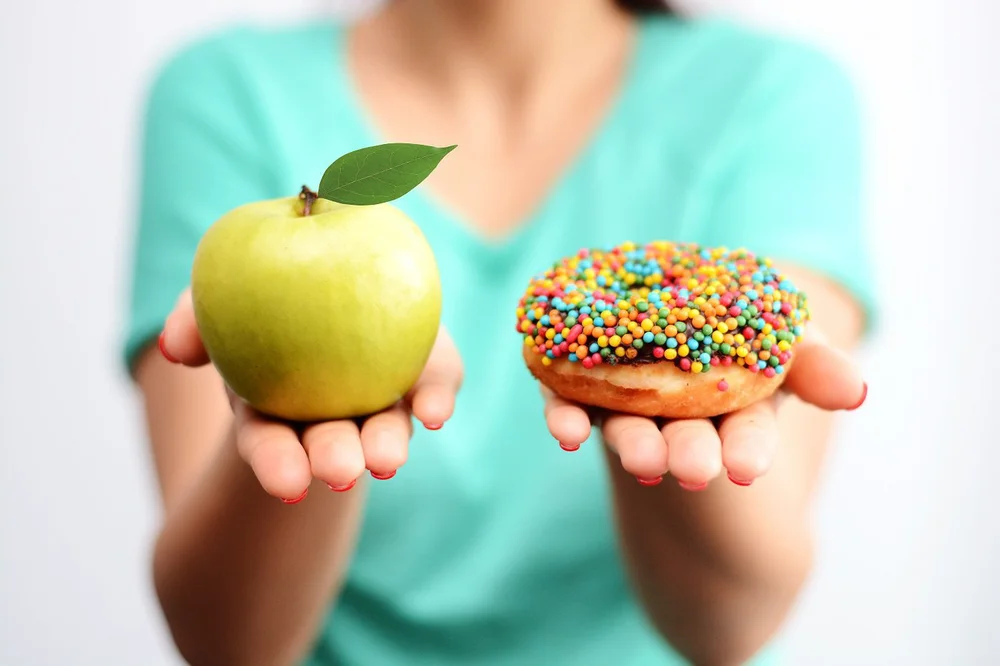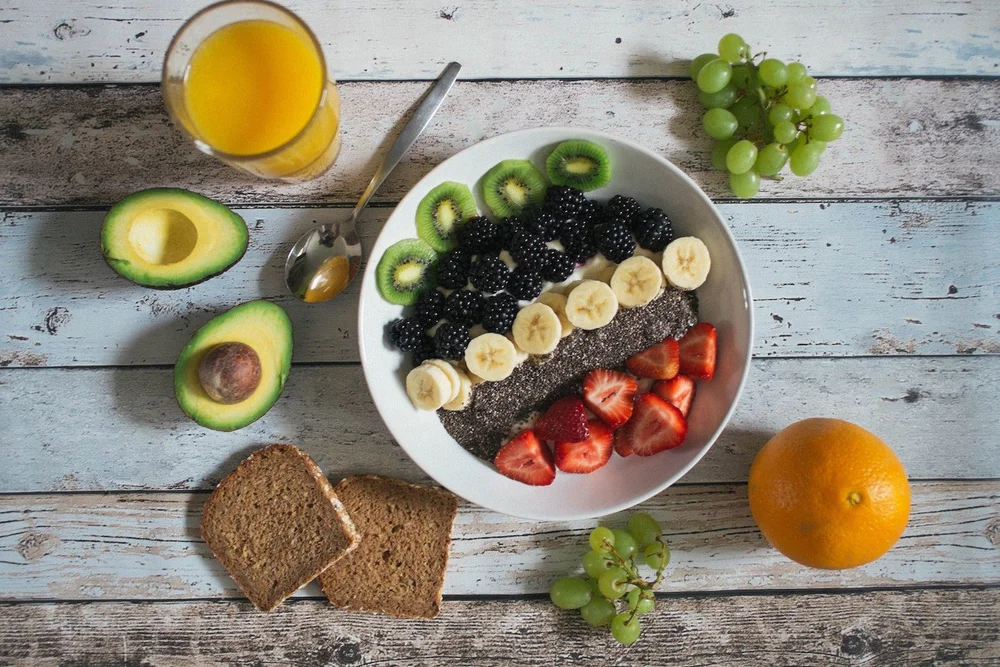Here Are Some of the Best Ways to Outsmart Your Sugar Cravings
Medically Reviewed by Dr. Nicole Avena
There’s mounting evidence that sugar can be toxic…even lethal. It can lead to many physical and mental problems and can act like a drug in the brain.
When you consume sugar, it boosts the feel-good neurotransmitter dopamine in the brain and causes your blood sugar to spike, which makes you feel good…temporarily.
But then your blood sugar levels can crash, impacting your mood and sense of well-being. Over time, high sugar diets can worsen inflammatory issues, cause sleep problems and fatigue, trigger cravings, and contribute to memory and learning struggles.
The evils of sugar may be no surprise to you. Maybe you’re making a conscious effort to eat a low sugar, brain healthy diet. Unfortunately, even many “healthy” foods are filled with hidden sugars that can fuel your cravings and mood issues.
Since the standard American diet is filled with nutritional pitfalls, here are some of the best ways to reduce cravings and avoid foods with hidden sugars…
10 Simple and Natural Ways to Outsmart Your Sugar Cravings
- Balance Your Blood Sugar

Counter to what you might think, drinking alcohol and eating sugary snacks, sweetened beverages, and other high-glycemic foods (rice, pasta, cereal) can cause blood sugar levels to drop. Stabilizing blood sugar levels throughout the day can help improve self-control and overall feelings of wellness.
These simple tips can help you keep your blood sugar balanced:
- Eat protein and healthy fats at every meal.
- Have smaller meals throughout the day. This helps eliminate the blood sugar rollercoaster ride that can impact your emotions and increase cravings.
- Replace simple sugars and refined carbs with healthier options. For example, swapping candy for a square of sugar-free dark chocolate can help you kick a sugar habit.
- Eliminate Artificial Sweeteners
One way to decrease your sugar intake is to get rid of artificial sweeteners. You may think of these sweeteners as “free” because they have no calories, but they can be significantly sweeter than sugar. Also, they may activate the appetite centers of the brain, making you crave even more sugar.
If you can do without any sweeteners, your brain will stop craving the sweetness. If you can’t do without sweeteners, try to replace sugar with sweeteners like stevia or erythritol.
- Manage Your Stress
Stress can trigger certain hormones that activate your cravings, making you believe you need the ice cream, cake, or other high sugar snacks or desserts to feel better. Meditation and hypnosis are powerful stress-management techniques that can boost blood flow to the PFC. These practices can help you resist the temptation to binge on your favorite sugary treat.
- Control Your Cravings
Nearly everywhere you go, someone is trying to entice you to eat something sweet. Think of the candy displays near the checkout counter at the grocery store, which are purposely positioned to tempt you to make an impulse buy.
To control your cravings, you must avoid the things that trigger you. Know what fuels your cravings and plan for your vulnerable times. For example, strategically plan your route in the grocery store to avoid the soda, candy, or chip aisles.
- Determine Food Allergies
Hidden food allergies and food sensitivities can trigger cravings and make you fall back into old habits. In some cases, gluten and milk sensitivities or allergies can lead to a decrease in blood flow to the brain, which can impair your judgment.
In addition, food allergies can cause concentration problems and anxiousness, which can increase cravings. To determine if you have any food sensitivities, consider trying an elimination diet.
Stop eating corn, soy, dairy, gluten, artificial sweeteners, and food colorings for 3 weeks. Then introduce them back into your diet one at a time and see if you have any reactions. You can eliminate foods that cause a negative reaction or health problem.
- Practice Willpower
Willpower is like a muscle. The more you use it, the stronger it gets. Practice saying no to the things that aren’t good for your health and over time you may find it easier to resist sugary foods or beverages.
- Get Moving
Physical exercise can help reduce cravings. A study in the journal Appetite showed that taking a brisk 15-minute walk decreased cravings for chocolate.
Exercise also fended off cravings for an additional 10 minutes following the walk. Since cravings typically only last about 10 minutes, a short workout may be all it takes to distract you from the sugary foods you’re craving.
- Make Sleep a Priority
Multiple studies, including a study in Nature Communications, show that lack of sleep can increase hunger levels and the desire for food.
“It’s important to get at least 7 hours of sleep each night to help battle cravings,” says Shane Creado, MD, psychiatrist and sleep medicine specialist at Amen Clinics Chicago. “Creating a healthy bedtime routine that promotes relaxation can help.”
- Professional Assistance
Sometimes you may need additional help to take the edge off your cravings. Enlisting the advice of a registered dietician, or your medical doctor, can be a great way to get additional tips and support. This can help you get your diet under control and reduce your intake of sugar.
- Avoid Hidden Sugars
Even if you aren’t adding sugar to the foods and beverages you enjoy, you still may be consuming sugars without even realizing it. Many so-called health foods contain added sugars. Always read food labels to identify these hidden sugars.
Here are 10 “health” foods that may contain hidden sugar:
Flavored Greek Yogurt
Greek yogurt is a good source of probiotics, which may benefit your gut by adding the good bacteria your intestinal tract needs to stay healthy. Packed with protein, Greek yogurt is often portrayed as a healthy food. But some flavored varieties also include large amounts of sugar and other unhealthy ingredients, so be sure to check the labels before you buy them.
Pre-made Protein Smoothies
A protein smoothie can be a great way to start the day. However, some smoothie brands try to hide their high sugar content. If necessary, opt for homemade smoothies to ensure you’re consuming healthy ingredients (without the added sugars).
Nut Butters
Almond butter, cashew butter, and other nut butters can be a good source of protein and fat. But be sure to read the nutrition labels. Some brands sneak sugar into their product to amp up the bliss point.
Instant Oatmeal
Packed with fiber and loaded with vitamins and minerals, slow-cooked oatmeal is associated with numerous health benefits. Instant oats, however, are highly processed and rank much higher on the glycemic index, indicating that they can spike blood sugar. Popular instant oatmeal flavors, like maple and brown sugar, can include added sugars, so it’s recommended to consider healthier options for breakfast.
Milk Alternatives
Going dairy-free can be beneficial for brain health and overall well-being for some, especially those who have milk allergies or sensitivities. However, some flavored milk alternatives – vanilla, chocolate, or pumpkin spice – can have high amounts of sugar per serving, so exercise caution when purchasing them.
Flavored Bottled Water
Water is essential for the health of your brain and body. Being even mildly dehydrated can make you feel more tense, moody, or angry and can also sap your energy levels and reduce concentration. Keep an eye on flavored waters, which may add unwanted sugar to make the taste more pleasant.
Gummy Vitamins
Taking nutritional supplements is a great way to make sure you’re getting the vitamins and minerals you need. Be aware that when you or your kids take gummy vitamins you’re likely also getting a dose of sugar with those nutrients.
It’s practically impossible to make gummies without using sugar or sugar alcohols, which can cause stomach discomfort or contribute to blood sugar problems. Parents are strongly cautioned when purchasing gummies for their children, since many contain excessive amounts of sugar.
Bottled Green Tea
Green tea is loaded with antioxidants, as well as a compound called l-theanine, which has been found to inhibit excessive overfiring in the brain and to help produce a feeling of calmness. Be sure to skip brands that infuse unhealthy added sugars into the healthy green tea.
Salad Dressing
Eating more greens and veggies provides your brain with a variety of nutrients and antioxidants. Dousing salads with sugar-laden, store-bought dressings can turn your healthy meal into one that has far more sugar than you realized. Consider making your own healthy salad dressing.
Protein Powder
You may think that making a protein smoothie at home is the best way to control what you put in it. But be sure to check the ingredients of your protein powder since many of them sneak sugar into the mix to enhance the flavor. Adding fruit – blueberries, raspberries, or strawberries – should be all the natural sugar your smoothie requires.
So Long, Sugar
Consuming large amounts of sugar can be detrimental to your health. Many illnesses have been linked to excessive sugar intake over extended periods of time.
If you’ve been struggling to curb your sweet tooth, these ten tips may help you outsmart your sugar cravings.
Now is the perfect time to make a clean break from sugar.
At BrainMD, we’re dedicated to providing the highest purity nutrients to improve your physical health and overall well-being. For more information about our full list of brain healthy supplements, please visit us at BrainMD.
- This Is What You Need to Know About HBOT
Medically Reviewed by Dr. Nicole Avena - April 22, 2024 - Hormone Changes in Men: How to Know If You Have Low Testosterone! - April 15, 2024
- This Is What You Need to Know About EMDR Therapy! - April 11, 2024



